In this blog, you will learn how cognitive financial modeling, coupled with artificial intelligence (AI) and machine learning (ML), is reshaping banking and financial services.
Traditional financial modeling relies on historical data and statistical models, which, while effective, fail to capture the dynamic and psychological aspects of financial decision-making.
However, banks can integrate cognitive financial modeling, which leverages AI, machine learning, sentiment analysis, and behavioral analytics, to gain deeper insights into market movements and customer behaviors to improve market predictions and risk assessment.
What is Cognitive Financial Modeling?
Cognitive financial modeling refers to the application of AI, machine learning, natural language processing (NLP), and data analytics in financial decision-making.
Unlike traditional models that rely purely on structured numerical data, cognitive models incorporate unstructured data sources such as,
- News articles and reports
- Social media and forum discussions
- Earnings call transcripts
- Customer transaction patterns
- Sentiment data from financial communities
By leveraging these diverse data sources, banks and financial institutions can build financial models that are more adaptive, predictive, and behaviorally aware.
Implementing Cognitive Financial Models in Banking
Building a Cognitive Financial Model (CFM) requires a structured, multi-stage approach that integrates data science, AI, behavioral analytics, and financial modeling techniques.
Below is a step-by-step implementation framework for banks to develop and deploy cognitive financial models for risk assessment, investment strategies, fraud detection, and customer insights.
1. Define the Financial Use Case
Before building a model, it’s crucial to first identify the key financial problem that the bank or financial institution wants to solve.
For example, cognitive models can be applied in various use cases, including
- Credit risk assessment to predict loan defaults more accurately using AI.
- Market forecasting to predict stock price movements using sentiment analysis.
- Fraud detection for identifying suspicious transactions with real-time anomaly detection.
- Prepayment risk modeling to Improve cash flow predictions by analyzing borrower behavior.
- Customer behavior insights to suggest and provide personalized/tailored financial products and services based on spending habits.
2. Data Collection & Preparation
Cognitive models require structured & unstructured data sources for accurate predictions. Some of the key data sources that banks can rely for data are-
| Data Type | Description |
| Structured Data | Loan repayment history, interest rates, financial statements |
| Unstructured Data | Customer reviews, earnings call transcripts, financial news |
| Behavioral Data | Transaction patterns, online activity, spending habits |
| Sentiment Data | Market sentiment from social media, analyst reports, economic indicators |
For example, to model loan prepayment risk, banks can collect the customer loan repayment history, macroeconomic indicators (interest rate fluctuations, housing market trends), and social media discussions on mortgage refinancing trends.
Banks can ingest data from multiple sources (databases, APIs, third-party financial data). However, it’s important to process and validate the raw data, clean missing values, standardize formats, normalize variables, and then use NLP (Natural Language Processing) or LLM/AI Agents to extract insights from text-based data.
However, many financial institutions struggle with data validation across large datasets, impacting decision accuracy. Learn how a US-based investment bank streamlined data validation using an AI-powered SMART Dashboard, improving data consistency for investment decisions.
3. Feature Engineering & Selection
Feature engineering involves identifying key variables that drive financial outcomes.
For instance, interest rate sensitivity, payment history, and credit utilization are some key variables for loan repayment models.
Similarly, news sentiment scores, stock volatility, macroeconomic indicators, and unusual spending behavior, high-risk transaction patterns, are some of the key variables or indicators for market prediction models and fraud detection models respectively.
4. Choose & Train the AI Model
Select the right machine learning / AI technique based on the financial problem. Some of the recommended models include:
- Decision Trees & Random Forests for credit scoring & loan risk assessment.
- Gradient Boosting (XGBoost, LightGBM) for stock price predictions & fraud detection.
- Neural Networks (Deep Learning) for NLP-based sentiment analysis.
- Proportional Hazard Models for loan prepayment probability estimation.
- Markov Models & Bayesian Inference for real-time fraud detection & risk modeling.
To learn more, explore how AI and ML are transforming credit risk modeling, enabling more flexible and accurate financial risk assessments.
5. Model Validation & Performance Testing
Before deployment, models must be validated to ensure accuracy, reliability, and compliance.
Some of the key validation techniques are as follows:
- Backtesting – Involves comparing model predictions with historical financial data.
- Stress Testing – Involves simulating extreme market conditions (e.g., recession, interest rate spikes). For example, test different interest rate scenarios in loan prepayment models.
- Explainability Testing to ensure AI model outputs are interpretable by regulators. For instance, use explainable AI (XAI) frameworks to justify predictions to auditors & regulators.
- Bias Detection to identify and remove data biases that impact decision-making. For instance, run fraud detection models across past fraudulent transaction datasets.
For example, a US-based lender reduced credit risk validation time by 40% with automation by implementing AI-driven model validation techniques.
6. Deployment & Integration into Banking Systems
For deploying cognitive financial models into real-time banking operations & decision-making workflows, banks can follow these deployment strategies-
- API-Based Integration to embed models into core banking systems for live decision-making.
- Use AWS, Azure, or Google Cloud for scalability.
- For data privacy and regulatory compliance, banks can also go for a hybrid approach where they use both on-premise & cloud AI systems.
Challenges in Implementing Cognitive Financial Modeling
While Cognitive Financial Modeling (CFM) offers significant advantages as discussed, its implementation poses several challenges. These challenges primarily stem from data privacy concerns, AI biases, infrastructure costs, and regulatory requirements.
Below is a brief breakdown of these key challenges and their impact on financial institutions.
Key Challenges in Cognitive Financial Modeling
| Challenge | Impact |
| Data Privacy & Security | Risk of data breaches, regulatory fines, need for encryption & compliance (GDPR, Basel III). |
| Bias in AI Models | Unfair lending, inaccurate risk scores, regulatory scrutiny for explainability. |
| High Implementation Costs | Expensive AI infrastructure, need for a skilled workforce, scalability challenges. |
| Regulatory & Compliance Complexity | AI transparency required, strict audit trails, legal risks from non-compliance. |
| Model Interpretability (XAI) | AI black-box issues, lack of trust, challenges in decision auditing. |
| Integration with Legacy Systems | Slow adoption, high transition costs, and interoperability issues. |
Conclusion
Cognitive financial modeling is transforming banking and financial services by integrating sentiment analysis and behavioral analytics.
However, challenges such as data security, AI bias, and regulatory hurdles must be carefully managed.
At Anaptyss, we specialize in helping financial institutions co-create, implement, optimize, and govern financial models tailored to their unique needs. Whether you’re looking to enhance credit risk modeling, improve fraud detection, or streamline regulatory compliance, our team of experts can guide you.
To learn more, reach out to us at info@anaptyss.com



